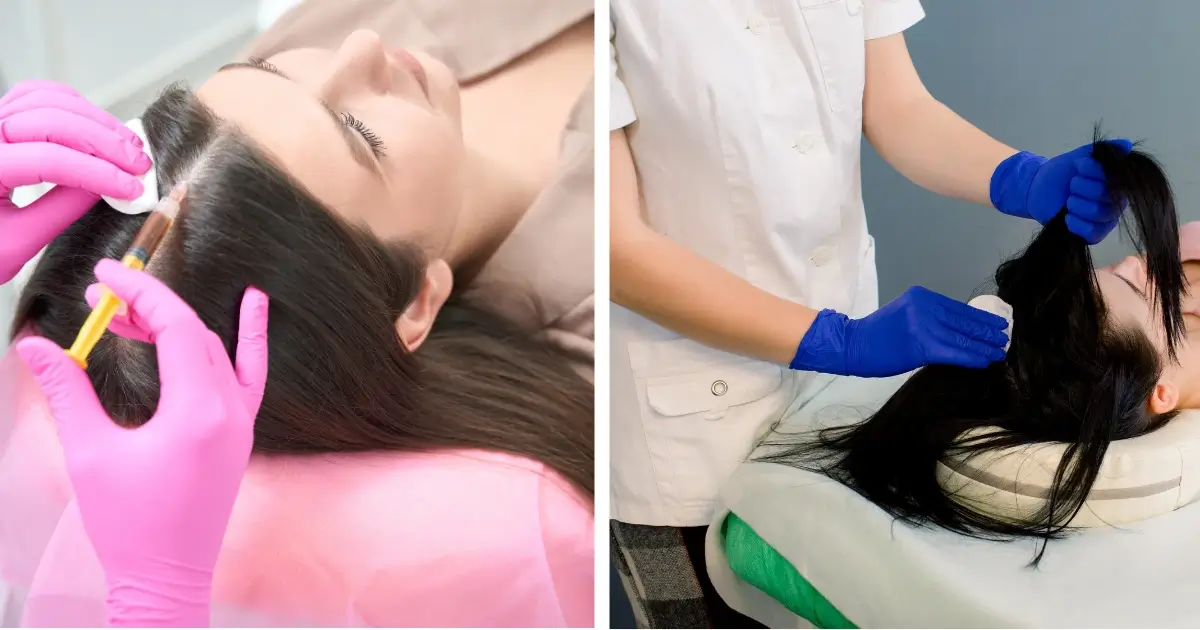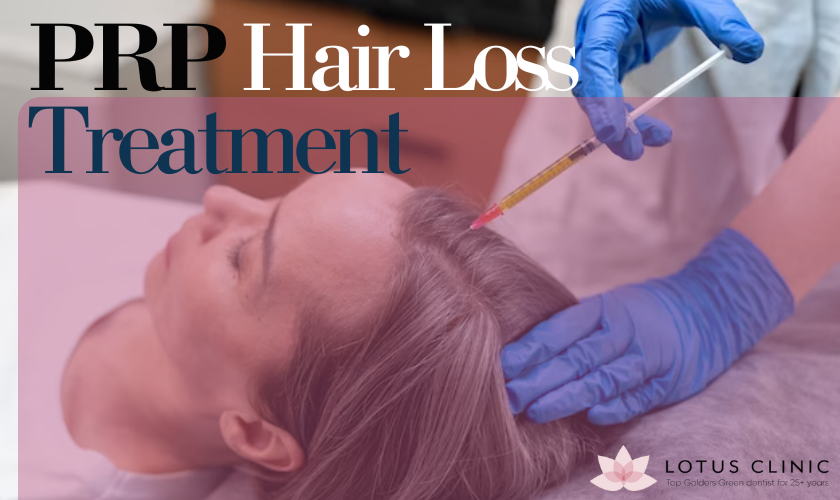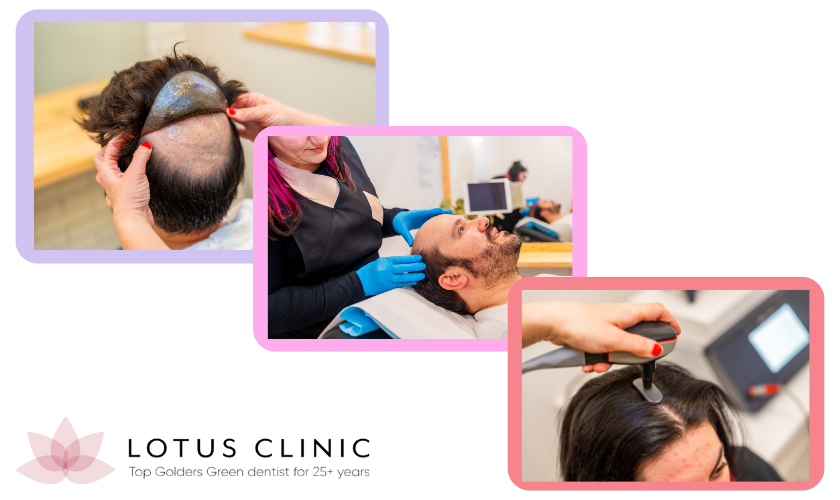943 Finchley Rd, London NW11 7PE
PRP vs. Traditional Hair Loss Treatments: What Makes PRP Stand Out?

Struggling with hair loss and unsure which treatment to choose? You’re not alone. With so many options out there, it can be overwhelming to find the right solution for your needs. Two popular choices often come up in discussions: PRP (Platelet-Rich Plasma) therapy and traditional hair loss treatments. Each offers unique benefits and has its own set of advantages and limitations.
In this blog, we’ll explore what distinguishes PRP therapy from traditional methods. We’ll explain how PRP works, compare it to established treatments like medications and hair transplants, and explore factors like effectiveness, safety, and cost. By the end, you’ll have a clearer understanding of which treatment might be the best fit for you.
Let’s unravel the mysteries of hair loss treatments and discover which one could help you achieve the results you’re looking for.

What is PRP Therapy?
PRP therapy, or Platelet-Rich Plasma therapy, is a cutting-edge treatment that uses your body’s own blood components to stimulate hair growth. Here’s a quick rundown of how it works:
- Blood Collection: A small amount of your blood is drawn, similar to a routine blood test.
- Processing: The blood is spun in a centrifuge to separate the platelet-rich plasma from other blood components.
- Injection: The PRP is then injected into your scalp at areas experiencing hair loss.
PRP therapy leverages the growth factors and proteins in your platelets to promote hair follicle rejuvenation and stimulate natural hair growth. Many patients appreciate this approach because it uses their own biological material, reducing the risk of allergic reactions or complications. This innovative treatment has gained popularity due to its minimal downtime and relatively simple procedure.
Traditional Hair Loss Treatments: An Overview
Traditional hair loss treatments come in various forms, each with its own methods and effectiveness. Here are the main types:

- Medications: These include topical solutions like minoxidil and oral medications like finasteride. They work by improving blood flow to the scalp or altering hormone levels.
- Hair Transplants: Involves moving hair follicles from one part of the scalp to thinning areas. This surgical approach aims to restore hair growth permanently.
- Laser Therapy: Uses low-level lasers to stimulate hair follicles and increase hair density.
Each method has its strengths and weaknesses. Medications can slow hair loss but often require long-term use. Hair transplants offer a permanent solution but involve surgery and recovery time. Laser therapy is non-invasive but might not be as effective for severe hair loss.
PRP vs. Medications: Which is More Effective?
When comparing PRP therapy with medications like minoxidil and finasteride, several factors come into play:
- Effectiveness: PRP therapy focuses on using your body’s own growth factors to stimulate hair growth. This can be particularly effective for individuals with thinning hair. On the other hand, medications can be effective but may require consistent use and often come with potential side effects.
- Side Effects: PRP therapy generally has fewer side effects as it uses your own blood. Medications might cause unwanted effects such as scalp irritation or hormonal changes.
- Treatment Duration: PRP typically involves a series of sessions over several months, with maintenance treatments every 4-6 months. Medications require daily use and lifelong commitment to maintain results.
Choosing between PRP and medications often depends on personal preferences, medical history, and specific hair loss conditions.
PRP vs. Hair Transplants: Which One to Choose?
PRP therapy and hair transplants offer different approaches to tackling hair loss:
- Procedure: PRP therapy is non-invasive, involving injections of platelets into the scalp. Hair transplants are surgical, requiring the removal and re-implantation of hair follicles.
- Recovery Time: PRP therapy has minimal downtime, allowing patients to return to their daily activities quickly. Hair transplants require a recovery period, with potential swelling and discomfort.
- Results: PRP therapy can stimulate natural hair growth and is suitable for early to moderate hair loss. Hair transplants provide a more permanent solution for advanced hair loss but involve a more invasive process.
Both methods can be effective, but the choice often comes down to the extent of hair loss, desired results, and personal preferences regarding invasiveness and recovery.
The Cost Factor: PRP vs. Traditional Treatments
Cost is a crucial consideration when choosing between PRP therapy and traditional hair loss treatments. Here’s a general overview:
- PRP Therapy: The cost can vary significantly based on factors like location and clinic reputation. PRP typically involves multiple sessions to achieve optimal results, which can influence the overall expense.
- Medications: Prescription medications such as finasteride or over-the-counter solutions like minoxidil are generally more affordable. These treatments usually require ongoing use, impacting the long-term cost.
- Hair Transplants: Hair transplants are typically the most expensive option. The cost varies depending on the number of grafts needed and the clinic’s expertise.
Lifestyle Factors Impacting Hair Loss Treatments
Lifestyle choices play a crucial role in the effectiveness of any hair loss treatment. Key factors include:

- Diet: A balanced diet rich in vitamins and minerals supports healthy hair growth. Nutrient deficiencies can hinder treatment outcomes.
- Stress Levels: High stress can exacerbate hair loss. Managing stress through relaxation techniques or counseling can improve treatment results.
- Smoking and Alcohol: Both smoking and excessive alcohol consumption can negatively impact hair health and reduce the effectiveness of treatments.
When to Consider PRP Therapy?
PRP therapy is a promising option for many individuals. It may be worth considering if:
- You Have Early to Moderate Hair Loss: PRP works best when used early in the hair loss process.
- You Prefer a Non-Surgical Option: If you’re hesitant about surgery, PRP offers a less invasive alternative.
- You’re Looking for a Treatment with Minimal Side Effects: PRP uses your own blood, reducing the risk of adverse reactions.
Choosing between PRP therapy and traditional hair loss treatments depends on various factors, including effectiveness, side effects, and cost. PRP offers a promising, minimally invasive option with natural results, while traditional treatments each have their own set of benefits and limitations. Evaluating these options based on your personal needs and consulting with a specialist will help you make an informed choice. Ultimately, understanding what makes each method unique can lead you to the best solution for your hair restoration journey.





